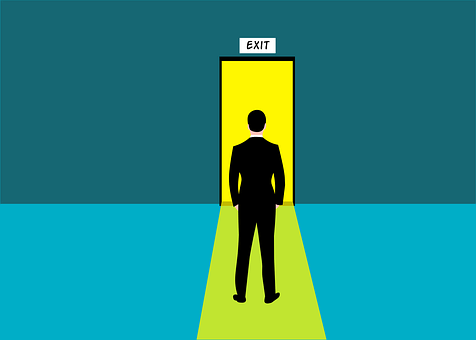People leave jobs all the time, whether they’re laid off, fired, or just quit. But how do their departures affect coworkers left behind? According to a new study from the UBC Sauder School of Business, those exits can lead many others to call it quits.
The researchers delved deeply into employment data from a major retailer that was experiencing high turnover to find out why. They reviewed data for roughly a million employees — including when they were hired, which store, which position, when they left, and why.
The study authors also had access to employee performance records, so they could evaluate whether workers were high performers or low performers.
“We looked at these stores as systems, and looked at the flow of employees in and out of them over time,” explained UBC Sauder assistant professor Sima Sajjadiani (she/her), who co-authored the study with John Kammeyer-Mueller and Alan Benson of the University of Minnesota. “It gave us a great opportunity to look at the immediate, short-term and long-term effects of each exit event, and compare them over time.”
Past studies have looked at how turnover affects remaining employees, but they typically focus on employee performance after others leave — and on the performance of the company overall. The UBC study is the first of its kind to look at the extent to which employee exits lead to even more departures, what types of exits cause the most churn, and the role that the performance level of exiting employees plays.
The researchers found that layoff announcements have a strong and immediate effect, and boost voluntary turnover among those who survive the layoffs.
“It’s very bad news for organizations, especially if they are laying off high performers, because if those positions get eliminated, both high and low performers start quitting,” said Dr. Sajjadiani. “It’s a signal that people’s jobs aren’t secure, and the organization doesn’t care about them, no matter how hard they work. So they think, ‘I should leave as soon as possible.’”
When employees quit their jobs voluntarily, their departures give a more moderate boost to voluntary turnover, and it takes longer for that ripple effect to occur.
“To high performers, voluntary exits are a positive signal that there are better opportunities elsewhere,” said Dr. Sajjadiani. “So while employees might not leave immediately, they do begin to look for other opportunities.”
When workers are dismissed, however, their departures have a relatively small and fleeting effect — and can even reduce voluntary turnover.
“Usually these are people who are disruptive or abusive, or aren’t doing their fair share,” said Dr. Sajjadiani. “When they go, high performers tend to stay longer, and the risk of voluntary turnover actually goes down.”
However, when a high performer is dismissed without clear justification, employers not only open themselves to legal headaches, it also sends the wrong message to other high performers. They also start heading for the door.
According to Dr. Sajjadiani, organizations vastly underestimate the ripple effects of people leaving and the resulting human capital costs. The research also sends a clear message to organizations that they should be extremely careful when they make exit decisions, or they risk destabilizing the whole organization very quickly.
“Communicating clearly and compassionately, justifying these decisions and trying to avoid the most severe course of actions are better for organizations than simply cutting people,” Dr. Sajjadiani said.


